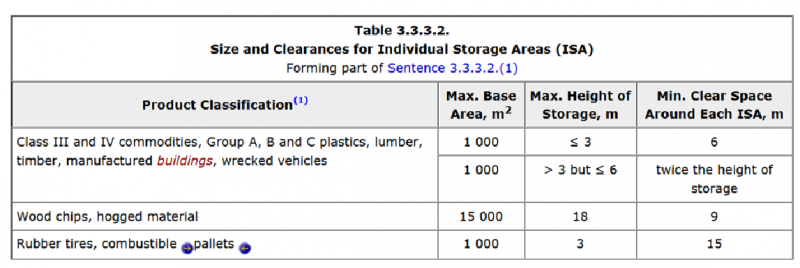Fire Code Regulations Update
Brian Isard
Last month at our Western Regional Meeting we had two fire safety professionals come and talk to us about how to ensure your business is in compliance with the Fire Code. Mark Smitton is President of the Fire Prevention Officers Association of BC (FPOABC) and Bob Furlong, formerly Richmond BC’s Chief Fire Prevention Officer, who also served with FPOABC and was a representative on B.C. Building Code and Fire Code Advisory Committees came and spoke to us about compliance to the fire code.
Having spent many years developing Fire Safety Plans and working in liaison with local fire departments, I found their presentation very helpful. More to the point, these discussions were very helpful in gaining a better understanding of how changes are made to the National Fire Code that affects Canadian businesses.
This should be of particular interest to anyone in the wood packaging industry because of what is currently happening in the US on this matter. South of the border, NWPCA, our sister organization, is working with International Code Council (ICC) on a proposal for a new section that would cover outdoor storage of pallets. The ICC is one of two major organizations that develop building and fire codes that are enforced by US fire officials. The other is the National Fire Protection Association.
This is not to say that what the US fire code developers decide will necessarily follow in Canada but it is a possibility, especially if the various code developers identify a serious risk associated with our industry that needs to be addressed. It also points to the need to work together with our sister organizations in the US because standards are increasingly being adopted on a North American basis.
In Canada, Natural Resources Canada (NCR) has the mandate to create the National Fire Code and it takes advisements through the Canadian Commission on Building and Fire Codes (CCBFC) and its related committees. The National Fire Code is upgraded every five years, with the last one done in 2012.
The various provinces adopt a provincial fire code on the basis of the National Fire Code, which in turn is followed by municipalities who may make amendments to include local requirements.
The provincial Fire Marshal’s office is typically the agency that collect data on fire related statistics. The Council of Canadian Fire Marshals and Fire Commissioners is responsible for the compilation and dissemination of national fire loss statistics and identifying trends relative to the causes and severity of fire.
Recent statistics in our industry indicate that in 2014 there were two pallet yard fires in Edmonton, AB at Ace Pallets and Lonestar Pallets. In January of this year there was a fire at Canada Pallet in Cobourg, ON when their grinding machinery that overheated and started a fire that forced the evacuation of 40 staff on site.
The best way to guarantee that our industry is not subject to new regulations is to ensure that there are no reportable incidents. This is done by ensuring our facilities are in compliance with the local Fire Code with respect to physical conditions such as:
Assuring your facility is in compliance with the local Fire Code is done through a site specific Fire Safety Plan.
The BC Fire Code has specific regulations that are of concern to the wood packaging industry. These govern the storage of raw material, (both logs and lumber); the manufacture such as dust control and the use of flammable materials storage of finished product such as outdoor inventory and the use of idle pallets (i.e. stored in racking, awaiting repair or sortation).

Source: Bob Furlong Design Company presentation to the CWPCA September 15, 2015
Something I learned early on is that every building and piece of property has its own set of unique characteristics that require the Fire Plan to be customized. Buildings differ in terms of their construction, location on the property, water supply, detection and protection devices, and distance to firefighting resources.
Therefore, Fire Safety Plans are designed with the particular site in mind and require customization. While you can do them yourself it often helps to have one done by someone familiar with the local code being applied and how it is interpreted by the local fire department.
Developing a Fire Safety Plan for your facility takes a fair amount of work. Designating staff to act as fire marshals responsible for ensuring fire prevention policies are followed, such as the use of Hot Work permits, also takes considerable effort on the part of management. However, the costs of recovering from a fire both in terms of damage to your business and reputation as well as settling the insurance claim make this effort well worth it.